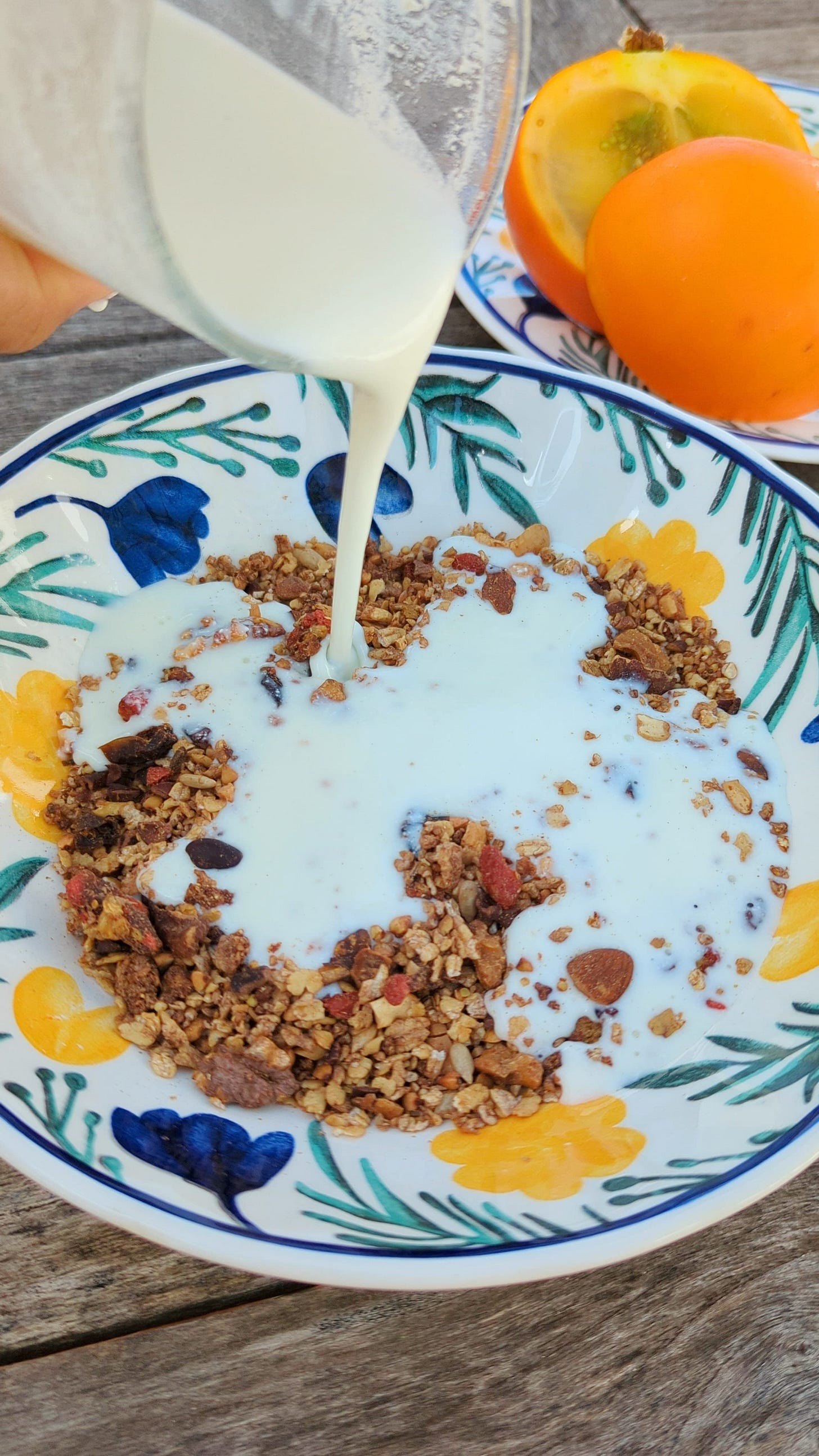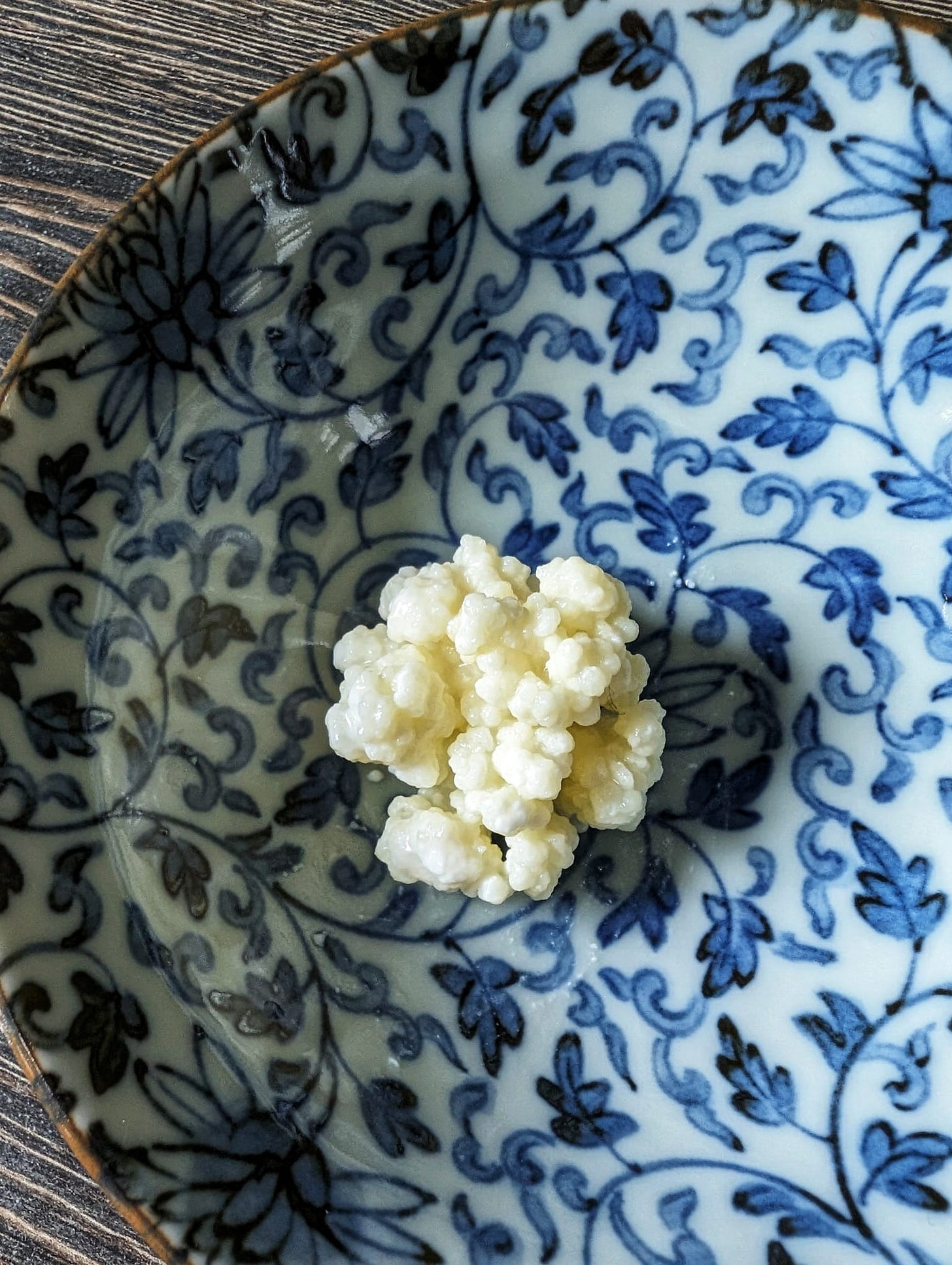How to make kefir, the easiest of the ferments
It takes less than a minute to prepare yourself
This essay is part of the You Can Do This series where I share empowering and practical how to guides that will hopefully help you acquire a new lifelong skill.
Hi! This is Leyla from A Day Well Spent, a newsletter seeking pathways to more purposeful living.
If you’re reading this by chance — welcome!
What subscribers received recently:
Why I chose a slower life - and said no to the London rat race
Why I’m so selective with who I spend time with — and the 16 personality traits I surround myself with
You can subscribe with your email to ensure you never miss my posts:
Kefir is a fermented yoghurt-like drink dating back millennia and in today’s column, I share how — and why — I consume this delicious and versatile food, packed with probiotics and nutrients, every day.
And the reasons I choose to make it myself.
Along with the process I follow to do so, and all the tips and tricks I’ve learnt over the years about how to make good kefir (there are quite a few).
Kefir is something I enjoy daily alongside my equally extremely easy to make homemade granola (containing at least 16 plants) and I have this combo for my weekday breakfast for most of the year.
When I published that granola recipe back in October, lots of you asked me if I could also share how I make the kefir. So here is that piece! The two go hand in hand.
I make kefir every day. You need just three things to do so: dairy milk, kefir grains and a glass jar. And the hands-on time is about 20 seconds; the process is so quick that if you blink, you might genuinely miss it.
There are, however, quite a few tips and tricks that are useful to know when making kefir and I cover everything I’ve learnt over the years in this post.
Are you someone who:
1) already buys readymade kefir? ✅
or
2) would like to start incorporating more fermented foods into your daily diet but don’t really know where to start? ✅
This post is for you.
I think kefir is a great introduction to the world of fermented foods because it can easily be swapped in place of milk, in most situations where you might already be consuming regular milk, such as at breakfast.
Today’s column is part of You Can Do This, a series of practical and self-empowering how to guides that started with a piece I wrote called the power of self-reliance. As always thank you for being here and I hope you enjoy this post.1
Feedback is really important. So if you enjoy reading this article, I encourage you to let me know by hitting the heart icon and sharing this piece to spread the word. Thank you.

The benefits of eating fermented foods daily
If you have an interest in food, it’s likely you have already heard about the role of the gut (aka the microbiome) in our overall health and wellbeing.
For example, a healthy microbiome containing plenty of beneficial microbes is linked to a working of the immune system, the body’s metabolic functions and many more health benefits.
Here are just a few of them:
Strong associations between consumption of fermented dairy and weight maintenance2
Regularly consuming fermented products may help to improve your body’s blood sugar control and reduce insulin resistance3
There are claims linking kefir to improved cholesterol levels and blood pressure4
Evidence is accumulating for antidiabetic and anti-obesity benefits of kimchi5
Fermented foods have been proposed for immune-related conditions such as arthritis, sclerosis, inflammatory bowel diseases6
There is an indication that fermented food consumption can alter mood and brain activity — a still nascent field of research7
If the world of fermented foods is one you are not yet familiar with, it’s worth having a read of this BBC article: Will a daily dose of fermented foods boost your health?
It provides a nice overview of the benefits of eating fermented food and also interviews
, Professor of Genetic Epidemiology at King's College London, and author of The Diet Myth: The Real Science Behind What We Eat (great book, I recommend).In a nutshell, Spector believes “everyone would be healthier if they had some fermented foods every day of their lives.”8
What is kefir?
Dairy kefir is a fermented drink made from milk9. The consistency is generally somewhere between regular milk and yoghurt and it has a slightly sour, tangy flavour.
People have been making kefir forever. It originated thousands of years ago in the mountains of the North Caucasus region of Russia, as well as in Tibet and Mongolia.
Fast forward to today and it is becoming increasingly popular in the West. You can find kefir in most supermarkets (although as we’ll see later, not all shop-bought kefir is made equal).
It is the “good bacteria” in kefir that give it its health-giving properties. And it is the magical kefir grains that bestow these good bacteria onto milk.
How does milk become kefir?
The term ‘kefir grains’ is really a misnomer. They are not grains in the usual sense but are in fact a clump of bacteria, yeast and other microorganisms that look like a bit of cottage cheese or a cauliflower floret.
Here are my kefir grains.
When this clump of “grains” is added to milk, the bacteria and the yeast in the clump feed on the milk and start to multiply – this is the start of the fermentation process.
These microorganisms turn their “food” (the milk) into other chemicals, changing the flavour and creating healthy nutrients. For example, kefir is a good source of many important vitamins and minerals including vitamins B, C, A, and K, as well as magnesium, calcium, and phosphorus.
What’s the difference between kefir and yoghurt?
Good quality, “live” and plain (unflavoured and unsweetened with no extra ingredients) yoghurt is a good fermented food to regularly eat.
But kefir is better.
Whilst “live” yogurts do contain probiotics (this is the proper term for good bacteria), kefir made from kefir grains has a much more diverse range of probiotics — around 300 different species — including some that are only found in kefir.
Kefir also contains much less lactose than yogurt. The process of fermentation reduces the amount of lactose in milk by around 30% and there are particular enzymes present in the kefir itself that can help you digest the remaining lactose once you’ve consumed it.
Useful to know if you happen to be lactose intolerant.
6 reasons to make your own kefir rather than buying it
1. Some mass-produced kefir products use bacteria and yeasts extracted from kefir grains, rather than the grains themselves. This reduces the number and diversity of probiotics in the kefir compared to if you make it yourself. And this information is rarely on the label.
2. You are eliminating the plastic bottles most shop-bought kefir comes in. And if you can get your milk delivered in returnable glass bottles by a milkman (as I do), you are making kefir without the use of any plastic at all.
3. Buying kefir is pricey. But buying organic kefir is even pricier. The cost of organic milk is a lot more accessible than the cost of organic kefir. So if you are someone who prefers to eat organic, you can make your own organic kefir for a lot less than it would be to buy the equivalent readymade. This is what I do.
4. You might live in a place where kefir isn’t readily available anyway. I’ve packed my kefir grains with me for extended stays in both Colombia and Argentina for this reason, so I could continue to enjoy the benefits of daily kefir. I also took 3kg of my own granola - I am that person.
5. Making your own food and increasing your self-reliance is empowering. I reckon the more middle men you can remove from your food equation, the more nutritious the food is and the better it tastes.
6. Did I mention kefir takes less than a minute to prepare?
Here’s the process of how I make my kefir
Along with the tips I’ve learnt along the way to make good kefir, including:
how to get a thicker more yoghurt-like texture
what kind of milk to use
temperatures
how to incorporate making it into the rhythm of your day
serving suggestions and how not to consume it
how to take a break from it
the best place to source kefir grains
And other trouble shooting bits.



